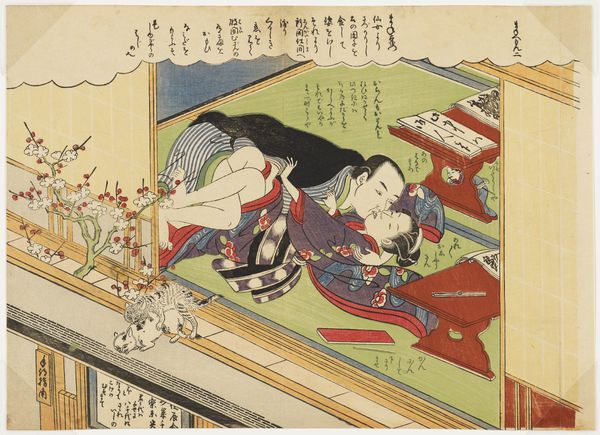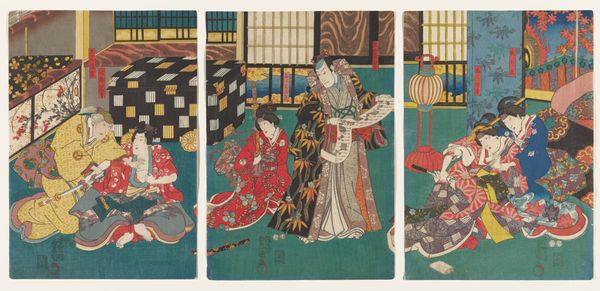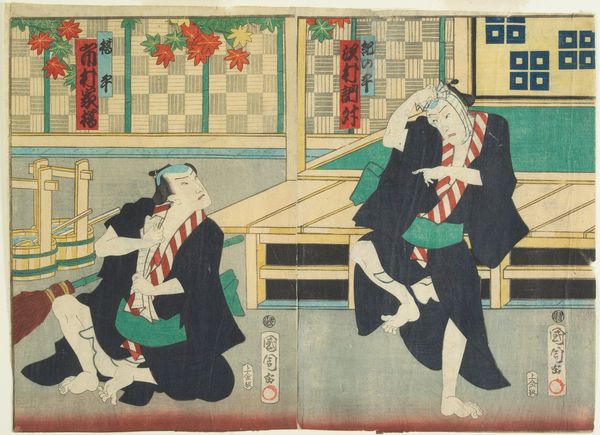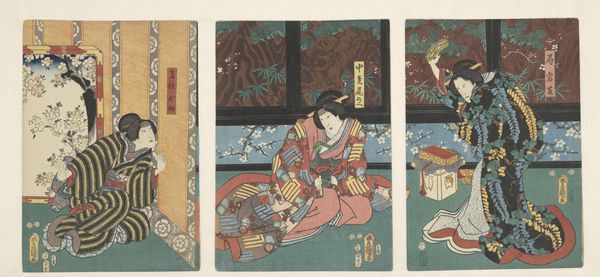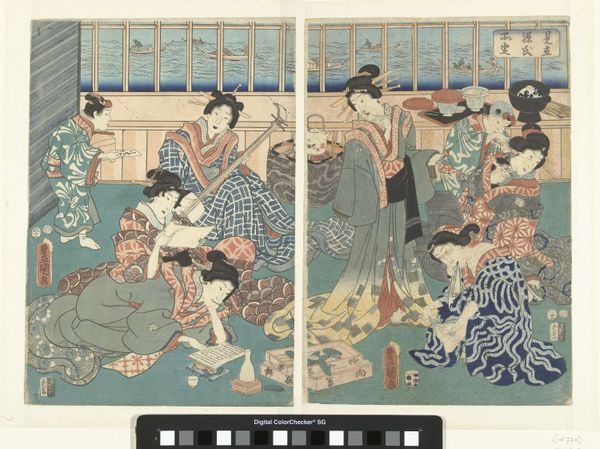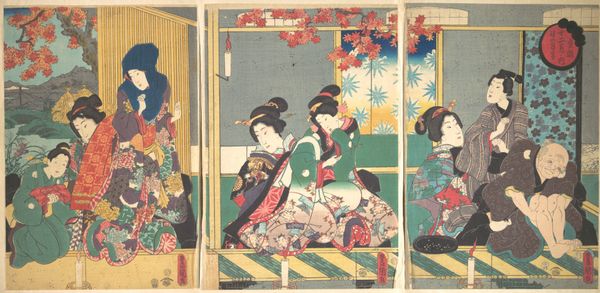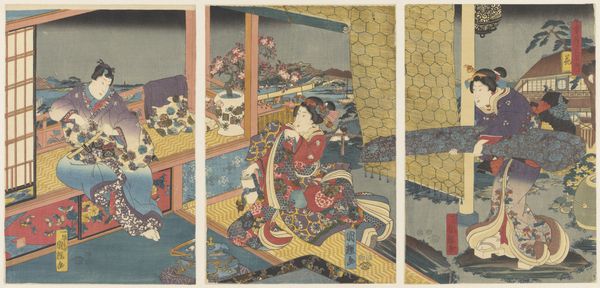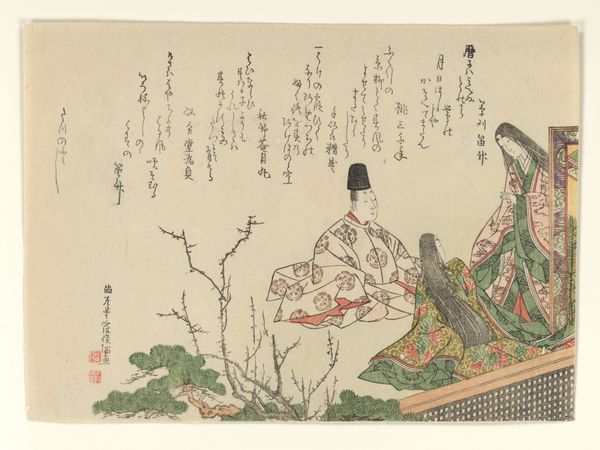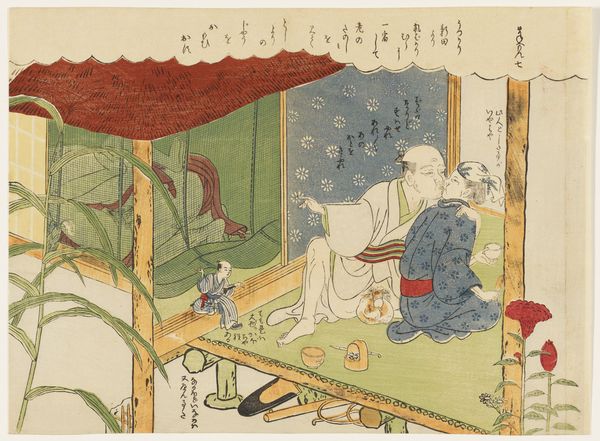
Scene from the play Sukeroku, The Cherry Blossom of Edo 1862 - 1863
0:00
0:00
print, woodblock-print
#
portrait
#
narrative-art
# print
#
asian-art
#
ukiyo-e
#
figuration
#
woodblock-print
#
genre-painting
Dimensions: height 365 mm, width 250 mm
Copyright: Rijks Museum: Open Domain
Curator: Looking at this triptych, I'm immediately struck by the sheer drama—it's so theatrical. The colors, the exaggerated poses...it feels like a single moment stretched and pulled across these three panels. Editor: Absolutely! What you’re sensing is Utagawa Kunisada's genius at play. This woodblock print, crafted around 1862-1863, depicts a scene from the Kabuki play "Sukeroku, The Cherry Blossom of Edo.” Each panel presents a different character integral to the narrative, offering insight into the complex power dynamics of Edo society. Curator: Power dynamics, tell me more? Editor: Well, on the left we see Agemaki, a high-ranking courtesan of the Yoshiwara district. Notice the extravagant details in her kimono and hair ornaments, indicators of her status but also her confinement within societal expectations of women. Curator: The middle panel then is Sukeroku himself, the play’s namesake, reclining with his sword. What does his relaxed pose signify? Editor: It belies his purpose. Sukeroku, often interpreted as a disguised samurai, roams the pleasure quarters searching for a specific sword, a symbol deeply intertwined with themes of revenge and political intrigue. His apparent idleness is a deliberate act within a broader strategy. Curator: That brings us to the final panel: the aged character with an intense gaze. Is he friend or foe? Editor: That's Ikyū, likely an antagonist within the play. The Rijksmuseum contextualizes his role, noting the layers of dramatic interpretation afforded by Kabuki tradition, from overt villainy to subdued corruption indicative of an eroding moral compass in feudal Japan. Curator: It’s incredible how much narrative richness Kunisada packed into these three panels! And each character represents very specific themes; what is femininity, honor and concealed power during a very complicated time of shifting political influences. Editor: Indeed! The legacy of Edo-period woodblock prints such as these allows us to contemplate these pressing social themes, and examine what resonates into the contemporary. A piece with enduring relevance! Curator: Kunisada has definitely left us much to think about, how art and culture can commentate so vividly.
Comments
rijksmuseum about 2 years ago
⋮
Many Kabuki scenes transpire in a brothel, like the one here. Sukeroku is looking for a stolen sword. He suspects a wealthy, elderly customer whose eye has fallen on Sukeroku’s girlfriend, the courtesan Agemaki. Sukeroku insults the man grieveously by offering him a pipe with his foot in the hope that he will draw his sword in anger.
Join the conversation
Join millions of artists and users on Artera today and experience the ultimate creative platform.

